Industrial Automation Market Size 2025-2029
The industrial automation market size is valued to increase USD 124.9 billion, at a CAGR of 10% from 2024 to 2029. Changing market dynamics will drive the industrial automation market.
Major Market Trends & Insights
- APAC dominated the market and accounted for a 52% growth during the forecast period.
- By Product - SCADA segment was valued at USD 39.40 billion in 2023
- By End-user - Process industry segment accounted for the largest market revenue share in 2023
Market Size & Forecast
- Market Opportunities: USD 98.79 billion
- Market Future Opportunities: USD 124.90 billion
- CAGR from 2024 to 2029 : 10%
Market Summary
- The market encompasses a dynamic and continuously evolving landscape shaped by core technologies and applications, service types, and regional trends. At its core, the market is driven by the increasing adoption of advanced technologies such as artificial intelligence, machine learning, and the Internet of Things (IoT). These innovations enable more efficient production processes, predictive maintenance, and improved safety measures. However, the market also faces challenges, including the need for open platform architectures for automation software and the technical complexities of implementing these solutions. According to recent studies, the market is expected to account for over 20% of the total automation market share by 2025.
- This growth is fueled by the increasing demand for automation in various industries, including manufacturing, energy, and utilities. The market's evolving dynamics continue to shape the competitive landscape, with key players focusing on innovation and collaboration to meet the demands of an increasingly automated world.
What will be the Size of the Industrial Automation Market during the forecast period?
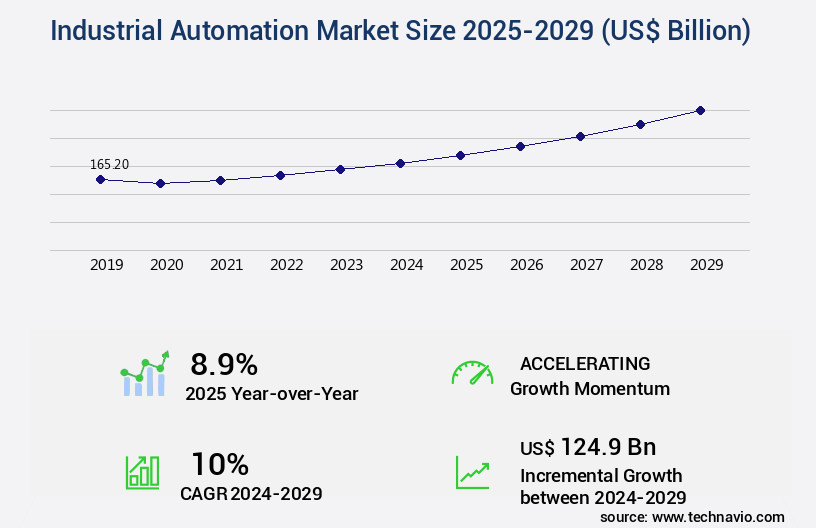
Get Key Insights on Market Forecast (PDF) Request Free Sample
How is the Industrial Automation Market Segmented ?
The industrial automation industry research report provides comprehensive data (region-wise segment analysis), with forecasts and estimates in "USD billion" for the period 2025-2029, as well as historical data from 2019-2023 for the following segments.
- Product
- SCADA
- PLC
- DCS
- Drives
- Sensors
- End-user
- Process industry
- Discrete industry
- Type
- Fixed automation
- Programmable automation
- Flexible and integrated automation
- Geography
- North America
- Europe
- APAC
- Australia
- China
- India
- Japan
- South Korea
- Rest of World (ROW)
By Product Insights
The SCADA segment is estimated to witness significant growth during the forecast period.
Industrial automation is a dynamic and evolving market that encompasses various technologies and applications. Approximately 30% of industrial companies have already implemented cybersecurity protocols to secure their automation systems, recognizing the importance of data protection in the digital age. Looking forward, the market anticipates a significant increase in adoption, with an estimated 45% of industries planning to invest in automation solutions in the next three years. Data acquisition systems are a crucial component of industrial automation, with real-time systems and programmable logic controllers (PLCs) playing essential roles. PLC programming, control algorithms, and industrial networking facilitate seamless communication between devices, enabling process optimization and production efficiency.
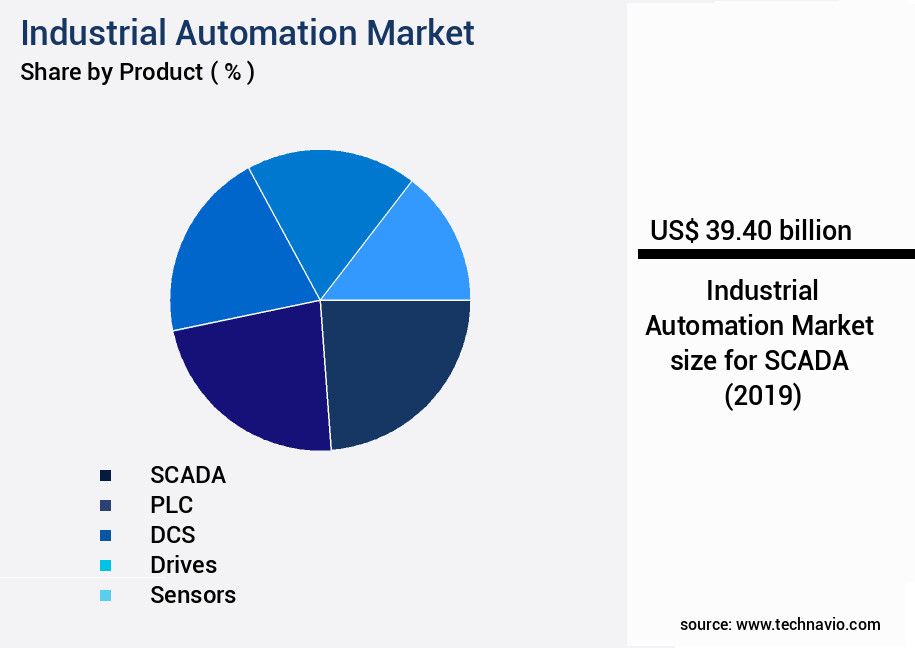
Request Free Sample
The SCADA segment was valued at USD 39.40 billion in 2019 and showed a gradual increase during the forecast period.
Machine vision systems, sensor integration, and automation software further enhance the capabilities of industrial automation, while robotics automation and actuator control streamline manufacturing processes. Industrial IoT, cloud-based automation, and digital twins are transforming industries by providing remote monitoring and control capabilities. In the realm of process control systems, quality control systems, and SCADA systems, real-time data analysis is essential for making informed decisions. Human-machine interface and industrial communication protocols ensure efficient interaction between operators and machines. Fieldbus networks, distributed control systems, system integration, and embedded systems further expand the scope of industrial automation. Data analytics plays a pivotal role in deriving valuable insights from the vast amounts of data generated by these systems.
With the integration of motion control systems, fault detection, and industrial security, industrial automation is poised to revolutionize industries and enhance operational efficiency.
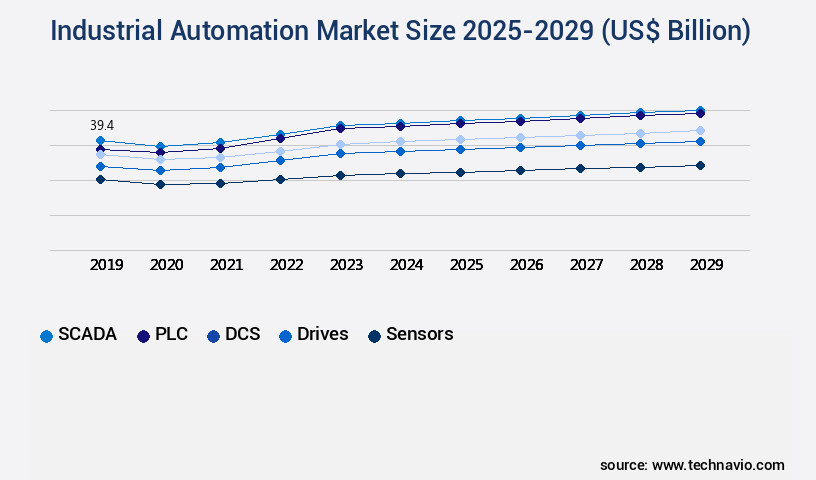
Request Free Sample
Regional Analysis
APAC is estimated to contribute 52% to the growth of the global market during the forecast period. Technavio's analysts have elaborately explained the regional trends and drivers that shape the market during the forecast period.
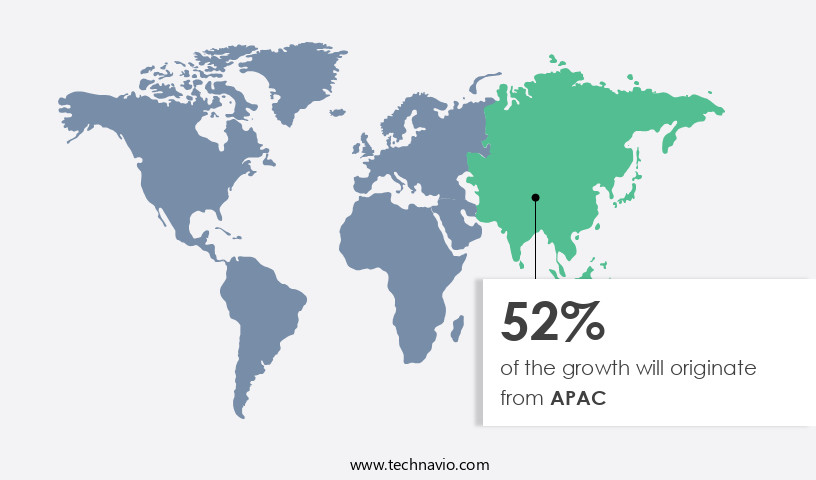
See How Industrial Automation Market Demand is Rising in APAC Request Free Sample
In the Asia Pacific (APAC) region, the market is experiencing significant growth, driven by key countries such as China, Japan, India, Vietnam, South Korea, Malaysia, and Australia. These nations are leading the charge due to their robust industrial bases and increasing investments in sectors like power, water and wastewater treatment, food and beverage, and oil and gas. China, Japan, South Korea, and India are the largest markets for industrial automation in APAC, with China and Japan being the major contributors.
The high demand for energy in APAC is leading to the initiation of numerous oil and gas projects. Although downstream activities dominate oil and gas investments in the region, midstream projects are also under development. This trend underscores the growing importance of industrial automation in APAC, as industries seek to optimize their operations and improve efficiency.
Market Dynamics
Our researchers analyzed the data with 2024 as the base year, along with the key drivers, trends, and challenges. A holistic analysis of drivers will help companies refine their marketing strategies to gain a competitive advantage.
The market encompasses a diverse range of technologies and applications, including PLC programming languages comparison, industrial Ethernet network design, SCADA system implementation strategies, robotics integration in manufacturing, predictive maintenance algorithms, industrial IoT security best practices, cloud-based automation architecture, digital twin implementation methodology, advanced process control techniques, human-machine interface design principles, system integration challenges, factory automation efficiency metrics, process optimization using machine learning, real-time data analytics in industry, fault detection diagnostic systems, production optimization techniques, quality control automated systems, automated guided vehicle navigation, industrial robot programming languages, and industrial communication protocol selection. Among these elements, robotics integration in manufacturing has gained significant traction, with more than 70% of new manufacturing initiatives integrating robots into their production lines.
In contrast, only a minority of players, less than 15%, focus on the academic application segment. This disparity highlights the industrial sector's growing reliance on automation for improved efficiency and productivity. Advanced process control techniques, such as predictive maintenance algorithms and real-time data analytics, have become essential for optimizing production and enhancing quality control. These techniques enable manufacturers to proactively address potential issues before they escalate, reducing downtime and improving overall plant performance. Cloud-based automation architecture and digital twin implementation methodology are other emerging trends, with many companies adopting these technologies to streamline operations and improve decision-making. The use of cloud-based systems allows for remote monitoring and control, while digital twin implementation offers virtual replicas of physical systems, enabling predictive maintenance and optimized performance.
As the market continues to evolve, companies must address challenges such as system integration, cybersecurity, and the selection of appropriate communication protocols to ensure seamless implementation and optimal performance. By focusing on these areas and leveraging the latest technologies, manufacturers can enhance their competitive edge and drive growth in the ever-evolving industrial landscape.
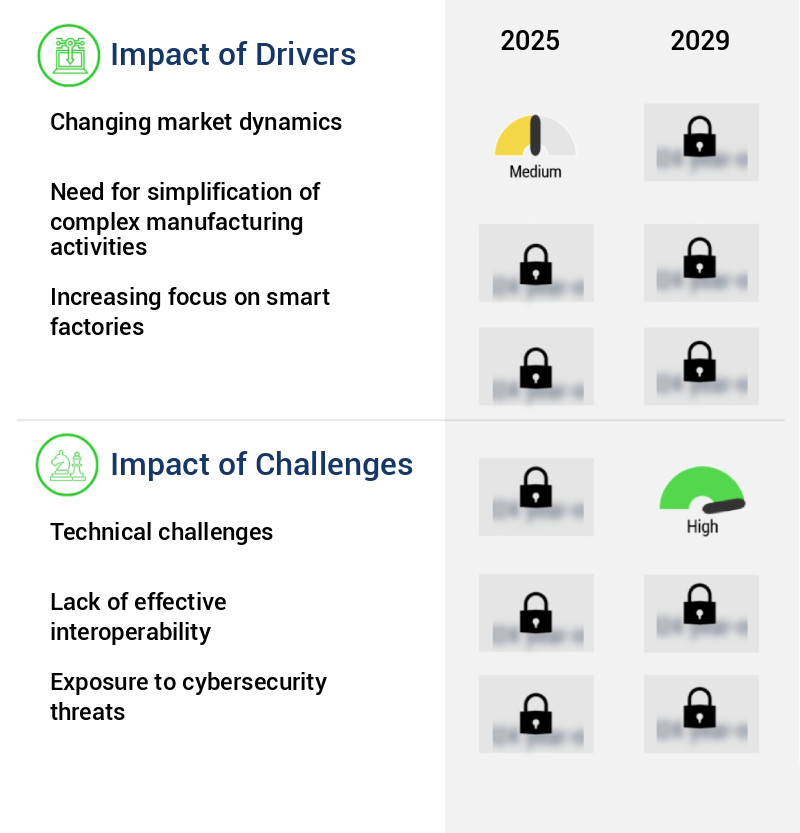
What are the key market drivers leading to the rise in the adoption of Industrial Automation Industry?
- The primary force shaping market evolution is the shifting market dynamics.
- Manufacturing industries face escalating operational challenges, with fluctuating raw material prices, geopolitical instability, and a slowing automotive sector increasing overall operational expenditure (OPEX). These factors, including metal and oil price volatility, the Russia-Ukraine conflict, and labor shortages, significantly impact manufacturing processes and profitability. Industrial automation emerges as a crucial response to these risks, enabling manufacturers to reduce labor requirements per plant and maintain OPEX control.
- This adaptive approach to manufacturing processes ensures resilience in the face of market uncertainties.
What are the market trends shaping the Industrial Automation Industry?
- The increasing requirement for open platform architectures is a notable trend in the automation software market. Open platform architectures are becoming increasingly necessary in the automation software industry.
- Industrial automation solutions play a crucial role in managing and controlling manufacturing plant functions. Open platforms for automation software enable users to customize and modify its features, empowering original equipment manufacturers (OEMs) to boost the operational capabilities of their products and expand connectivity options, thereby mitigating interoperability challenges. The adoption of open-architecture platforms increases the flexibility to select runtime platforms, such as industrial PCs and operating panels. This freedom extends to importing third-party scripting tools and net controls, enhancing the platform's versatility. The open-platform architecture offers a range of benefits, including the ability to use scripting tools in various applications, interface applications, development libraries, and both front-end and back-end applications.
- This flexibility enables end-users to tailor the platform to their specific needs, ensuring seamless integration with existing systems and processes. By embracing open-architecture platforms, industrial automation solutions continue to evolve, offering advanced functionalities and improved interoperability across various sectors.
What challenges does the Industrial Automation Industry face during its growth?
- The growth of the industry is significantly impacted by the technical challenges that businesses must address. These complex issues pose a significant hurdle for industry expansion and require the expertise and resources of professionals to overcome.
- In the realm of industrial automation, the integration of the Industrial Internet of Things (IIoT) has brought about a new wave of challenges at the control level. IIoT, a significant component of Industry 4.0, offers benefits such as real-time communication and heightened reliability. Its applications extend to manufacturing and factory automation, facilitating smart maintenance, distributed intelligence systems, and predictive analytics. However, the escalating adoption of IoT-enabled devices in industrial settings introduces design complexities for manufacturers and system integrators. The factory automation process encompasses three fundamental levels for control: field level, control level, and operator level.
- At the control level, IIoT introduces intricacies such as managing vast amounts of data, ensuring cybersecurity, and maintaining interoperability between various devices and systems. These challenges necessitate innovative solutions, including advanced analytics tools and edge computing capabilities. By addressing these complexities, IIoT is poised to revolutionize factory automation, enhancing overall efficiency and productivity.
Exclusive Technavio Analysis on Customer Landscape
The industrial automation market forecasting report includes the adoption lifecycle of the market, covering from the innovator's stage to the laggard's stage. It focuses on adoption rates in different regions based on penetration. Furthermore, the industrial automation market report also includes key purchase criteria and drivers of price sensitivity to help companies evaluate and develop their market growth analysis strategies.
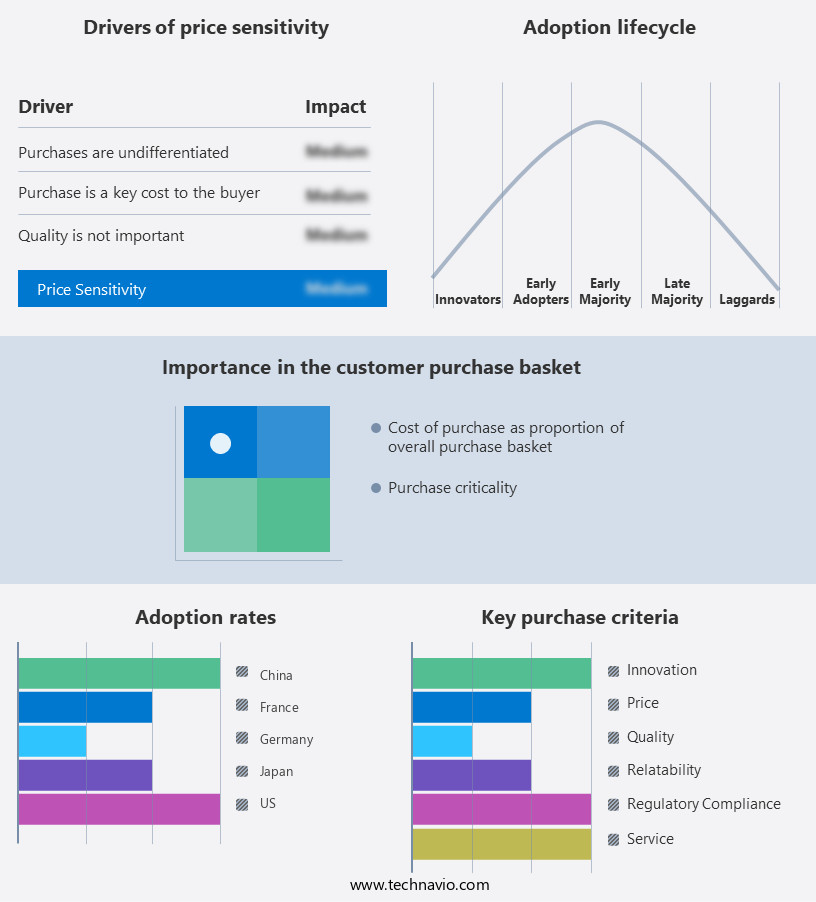
Customer Landscape of Industrial Automation Industry
Competitive Landscape
Companies are implementing various strategies, such as strategic alliances, industrial automation market forecast, partnerships, mergers and acquisitions, geographical expansion, and product/service launches, to enhance their presence in the industry.
ABB Ltd. - The company specializes in industrial automation solutions, including the advanced Industrial IT System 800xA.
The industry research and growth report includes detailed analyses of the competitive landscape of the market and information about key companies, including:
- ABB Ltd.
- Azbil Corp.
- Danfoss AS
- Dassault Systemes SE
- Emerson Electric Co.
- Endress Hauser Group Services AG
- FANUC Corp.
- Fuji Electric Co. Ltd.
- General Electric Co.
- Hitachi Ltd.
- Honeywell International Inc.
- KROHNE Messtechnik GmbH
- OmniVision Technologies Inc.
- OMRON Corp.
- Robert Bosch GmbH
- Rockwell Automation Inc.
- Schneider Electric SE
- Siemens AG
- WIKA Alexander Wiegand SE and Co. KG
- Yokogawa Electric Corp.
Qualitative and quantitative analysis of companies has been conducted to help clients understand the wider business environment as well as the strengths and weaknesses of key industry players. Data is qualitatively analyzed to categorize companies as pure play, category-focused, industry-focused, and diversified; it is quantitatively analyzed to categorize companies as dominant, leading, strong, tentative, and weak.
Recent Development and News in Industrial Automation Market
- In January 2024, ABB, a leading industrial automation company, announced the launch of its new digital offering, "ABB Ability™ Smart Sensor Pack," designed to enhance predictive maintenance in industrial applications (ABB Press Release, 2024). This innovation allows for real-time monitoring and analysis of machine performance data, reducing downtime and increasing efficiency.
- In March 2024, Siemens and Microsoft entered into a strategic partnership to integrate Microsoft Azure IoT and Siemens' industrial automation and digitalization solutions, aiming to accelerate the digital transformation of industries (Microsoft News Center, 2024). This collaboration enables seamless data exchange between industrial equipment and cloud services, enhancing the capabilities of both companies.
- In May 2024, Schneider Electric completed the acquisition of AVEVA Group, a leading engineering software company, for approximately €4.4 billion (Schneider Electric Press Release, 2024). This strategic move expands Schneider Electric's digital transformation offering, providing a comprehensive portfolio of software solutions for various industries.
- In February 2025, Honeywell International and LG Chem announced a joint venture to develop and manufacture lithium-ion batteries for industrial applications (Honeywell Press Release, 2025). This collaboration aims to address the growing demand for energy storage solutions in industrial automation, providing more efficient and sustainable power management systems.
Dive into Technavio's robust research methodology, blending expert interviews, extensive data synthesis, and validated models for unparalleled Industrial Automation Market insights. See full methodology.
|
Market Scope
|
|
Report Coverage
|
Details
|
|
Page number
|
229
|
|
Base year
|
2024
|
|
Historic period
|
2019-2023 |
|
Forecast period
|
2025-2029
|
|
Growth momentum & CAGR
|
Accelerate at a CAGR of 10%
|
|
Market growth 2025-2029
|
USD 124.9 billion
|
|
Market structure
|
Fragmented
|
|
YoY growth 2024-2025(%)
|
8.9
|
|
Key countries
|
US, China, Germany, Japan, UK, India, Canada, South Korea, France, and Australia
|
|
Competitive landscape
|
Leading Companies, Market Positioning of Companies, Competitive Strategies, and Industry Risks
|
Request Free Sample
Research Analyst Overview
- The market is a dynamic and ever-evolving landscape, driven by advancements in technology and the increasing demand for efficient and connected manufacturing processes. Key components of this market include cybersecurity protocols, data acquisition systems, and remote monitoring systems, which enable real-time systems to function effectively. Cybersecurity protocols play a crucial role in securing industrial networks and protecting against potential threats. Data acquisition systems collect and process vital information, while remote monitoring systems allow for real-time analysis and control from a distance. Real-time systems, in turn, facilitate quick decision-making and process optimization. PLC programming and control algorithms are essential building blocks for automating industrial processes.
- Industrial networking, including technologies like Industrial Ethernet and fieldbus networks, facilitate seamless communication between various components. Machine vision systems and sensor integration enhance quality control and production optimization, while automation software streamlines processes and improves industrial efficiency. Robotics automation, actuator control, and motion control systems are integral parts of modern manufacturing, enabling precise and efficient production. Digital twins and Industrial IoT enable cloud-based automation and remote management, further increasing flexibility and efficiency. Process control systems and SCADA systems ensure reliable and efficient operation of industrial processes. System integration and embedded systems enable seamless interaction between various components, while data analytics provide valuable insights for continuous improvement.
- Industrial communication protocols, including human-machine interfaces, are essential for effective communication between humans and machines. Fault detection and system integration are critical for maintaining industrial systems' health and minimizing downtime. In summary, the market is characterized by continuous innovation and the integration of various technologies to optimize industrial processes, enhance efficiency, and improve overall productivity.
What are the Key Data Covered in this Industrial Automation Market Research and Growth Report?
-
What is the expected growth of the Industrial Automation Market between 2025 and 2029?
-
What segmentation does the market report cover?
-
The report is segmented by Product (SCADA, PLC, DCS, Drives, and Sensors), End-user (Process industry and Discrete industry), Type (Fixed automation, Programmable automation, and Flexible and integrated automation), and Geography (APAC, North America, Europe, South America, and Middle East and Africa)
-
Which regions are analyzed in the report?
-
APAC, North America, Europe, South America, and Middle East and Africa
-
What are the key growth drivers and market challenges?
-
Who are the major players in the Industrial Automation Market?
-
ABB Ltd., Azbil Corp., Danfoss AS, Dassault Systemes SE, Emerson Electric Co., Endress Hauser Group Services AG, FANUC Corp., Fuji Electric Co. Ltd., General Electric Co., Hitachi Ltd., Honeywell International Inc., KROHNE Messtechnik GmbH, OmniVision Technologies Inc., OMRON Corp., Robert Bosch GmbH, Rockwell Automation Inc., Schneider Electric SE, Siemens AG, WIKA Alexander Wiegand SE and Co. KG, and Yokogawa Electric Corp.
Market Research Insights
- The market encompasses a range of technologies and solutions, including robotics, supply chain optimization, smart manufacturing, advanced process control, process simulation, process automation, automated guided vehicles, energy efficiency, control engineering, SCADA software, MES software, process improvement, industrial robotics, factory automation, automation technology, quality assurance, control loop tuning, manufacturing execution systems, industrial networks, operator training simulators, digital factory, production monitoring, industrial safety systems, system architectures, maintenance management systems, and IIoT platforms. According to recent estimates, the global market size for industrial automation is projected to reach USD 229.2 billion by 2025.
- In contrast, the market size for control engineering software was valued at USD 12.5 billion in 2020. These figures underscore the significant growth and ongoing evolution of the market, driven by the increasing demand for efficient, connected, and intelligent manufacturing solutions.
We can help! Our analysts can customize this industrial automation market research report to meet your requirements.
Get in touch
1 Executive Summary
- 1.1 Market overview
- Executive Summary - Chart on Market Overview
- Executive Summary - Data Table on Market Overview
- Executive Summary - Chart on Global Market Characteristics
- Executive Summary - Chart on Market by Geography
- Executive Summary - Chart on Market Segmentation by Product
- Executive Summary - Chart on Market Segmentation by End-user
- Executive Summary - Chart on Market Segmentation by Type
- Executive Summary - Chart on Incremental Growth
- Executive Summary - Data Table on Incremental Growth
- Executive Summary - Chart on Company Market Positioning
2 Technavio Analysis
- 2.1 Analysis of price sensitivity, lifecycle, customer purchase basket, adoption rates, and purchase criteria
- Analysis of price sensitivity, lifecycle, customer purchase basket, adoption rates, and purchase criteria
- 2.2 Criticality of inputs and Factors of differentiation
- Overview on criticality of inputs and factors of differentiation
- 2.3 Factors of disruption
- Overview on factors of disruption
- 2.4 Impact of drivers and challenges
- Impact of drivers and challenges in 2024 and 2029
3 Market Landscape
- 3.1 Market ecosystem
- Parent Market
- Data Table on - Parent Market
- 3.2 Market characteristics
- Market characteristics analysis
4 Market Sizing
- 4.1 Market definition
- Offerings of companies included in the market definition
- 4.2 Market segment analysis
- 4.4 Market outlook: Forecast for 2024-2029
- Chart on Global - Market size and forecast 2024-2029 ($ billion)
- Data Table on Global - Market size and forecast 2024-2029 ($ billion)
- Chart on Global Market: Year-over-year growth 2024-2029 (%)
- Data Table on Global Market: Year-over-year growth 2024-2029 (%)
5 Historic Market Size
- 5.1 Global Industrial Automation Market 2019 - 2023
- Historic Market Size - Data Table on Global Industrial Automation Market 2019 - 2023 ($ billion)
- 5.2 Product segment analysis 2019 - 2023
- Historic Market Size - Product Segment 2019 - 2023 ($ billion)
- 5.3 End-user segment analysis 2019 - 2023
- Historic Market Size - End-user Segment 2019 - 2023 ($ billion)
- 5.4 Type segment analysis 2019 - 2023
- Historic Market Size - Type Segment 2019 - 2023 ($ billion)
- 5.5 Geography segment analysis 2019 - 2023
- Historic Market Size - Geography Segment 2019 - 2023 ($ billion)
- 5.6 Country segment analysis 2019 - 2023
- Historic Market Size - Country Segment 2019 - 2023 ($ billion)
6 Qualitative Analysis
- 6.1 Impact of AI in global industrial automation market
7 Five Forces Analysis
- 7.1 Five forces summary
- Five forces analysis - Comparison between 2024 and 2029
- 7.2 Bargaining power of buyers
- Bargaining power of buyers - Impact of key factors 2024 and 2029
- 7.3 Bargaining power of suppliers
- Bargaining power of suppliers - Impact of key factors in 2024 and 2029
- 7.4 Threat of new entrants
- Threat of new entrants - Impact of key factors in 2024 and 2029
- 7.5 Threat of substitutes
- Threat of substitutes - Impact of key factors in 2024 and 2029
- 7.6 Threat of rivalry
- Threat of rivalry - Impact of key factors in 2024 and 2029
- 7.7 Market condition
- Chart on Market condition - Five forces 2024 and 2029
8 Market Segmentation by Product
- 8.1 Market segments
- Chart on Product - Market share 2024-2029 (%)
- Data Table on Product - Market share 2024-2029 (%)
- 8.2 Comparison by Product
- Chart on Comparison by Product
- Data Table on Comparison by Product
- 8.3 SCADA - Market size and forecast 2024-2029
- Chart on SCADA - Market size and forecast 2024-2029 ($ billion)
- Data Table on SCADA - Market size and forecast 2024-2029 ($ billion)
- Chart on SCADA - Year-over-year growth 2024-2029 (%)
- Data Table on SCADA - Year-over-year growth 2024-2029 (%)
- 8.4 PLC - Market size and forecast 2024-2029
- Chart on PLC - Market size and forecast 2024-2029 ($ billion)
- Data Table on PLC - Market size and forecast 2024-2029 ($ billion)
- Chart on PLC - Year-over-year growth 2024-2029 (%)
- Data Table on PLC - Year-over-year growth 2024-2029 (%)
- 8.5 DCS - Market size and forecast 2024-2029
- Chart on DCS - Market size and forecast 2024-2029 ($ billion)
- Data Table on DCS - Market size and forecast 2024-2029 ($ billion)
- Chart on DCS - Year-over-year growth 2024-2029 (%)
- Data Table on DCS - Year-over-year growth 2024-2029 (%)
- 8.6 Drives - Market size and forecast 2024-2029
- Chart on Drives - Market size and forecast 2024-2029 ($ billion)
- Data Table on Drives - Market size and forecast 2024-2029 ($ billion)
- Chart on Drives - Year-over-year growth 2024-2029 (%)
- Data Table on Drives - Year-over-year growth 2024-2029 (%)
- 8.7 Sensors - Market size and forecast 2024-2029
- Chart on Sensors - Market size and forecast 2024-2029 ($ billion)
- Data Table on Sensors - Market size and forecast 2024-2029 ($ billion)
- Chart on Sensors - Year-over-year growth 2024-2029 (%)
- Data Table on Sensors - Year-over-year growth 2024-2029 (%)
- 8.8 Market opportunity by Product
- Market opportunity by Product ($ billion)
- Data Table on Market opportunity by Product ($ billion)
9 Market Segmentation by End-user
- 9.1 Market segments
- Chart on End-user - Market share 2024-2029 (%)
- Data Table on End-user - Market share 2024-2029 (%)
- 9.2 Comparison by End-user
- Chart on Comparison by End-user
- Data Table on Comparison by End-user
- 9.3 Process industry - Market size and forecast 2024-2029
- Chart on Process industry - Market size and forecast 2024-2029 ($ billion)
- Data Table on Process industry - Market size and forecast 2024-2029 ($ billion)
- Chart on Process industry - Year-over-year growth 2024-2029 (%)
- Data Table on Process industry - Year-over-year growth 2024-2029 (%)
- 9.4 Discrete industry - Market size and forecast 2024-2029
- Chart on Discrete industry - Market size and forecast 2024-2029 ($ billion)
- Data Table on Discrete industry - Market size and forecast 2024-2029 ($ billion)
- Chart on Discrete industry - Year-over-year growth 2024-2029 (%)
- Data Table on Discrete industry - Year-over-year growth 2024-2029 (%)
- 9.5 Market opportunity by End-user
- Market opportunity by End-user ($ billion)
- Data Table on Market opportunity by End-user ($ billion)
10 Market Segmentation by Type
- 10.1 Market segments
- Chart on Type - Market share 2024-2029 (%)
- Data Table on Type - Market share 2024-2029 (%)
- 10.2 Comparison by Type
- Chart on Comparison by Type
- Data Table on Comparison by Type
- 10.3 Fixed automation - Market size and forecast 2024-2029
- Chart on Fixed automation - Market size and forecast 2024-2029 ($ billion)
- Data Table on Fixed automation - Market size and forecast 2024-2029 ($ billion)
- Chart on Fixed automation - Year-over-year growth 2024-2029 (%)
- Data Table on Fixed automation - Year-over-year growth 2024-2029 (%)
- 10.4 Programmable automation - Market size and forecast 2024-2029
- Chart on Programmable automation - Market size and forecast 2024-2029 ($ billion)
- Data Table on Programmable automation - Market size and forecast 2024-2029 ($ billion)
- Chart on Programmable automation - Year-over-year growth 2024-2029 (%)
- Data Table on Programmable automation - Year-over-year growth 2024-2029 (%)
- 10.5 Flexible and integrated automation - Market size and forecast 2024-2029
- Chart on Flexible and integrated automation - Market size and forecast 2024-2029 ($ billion)
- Data Table on Flexible and integrated automation - Market size and forecast 2024-2029 ($ billion)
- Chart on Flexible and integrated automation - Year-over-year growth 2024-2029 (%)
- Data Table on Flexible and integrated automation - Year-over-year growth 2024-2029 (%)
- 10.6 Market opportunity by Type
- Market opportunity by Type ($ billion)
- Data Table on Market opportunity by Type ($ billion)
11 Customer Landscape
- 11.1 Customer landscape overview
- Analysis of price sensitivity, lifecycle, customer purchase basket, adoption rates, and purchase criteria
12 Geographic Landscape
- 12.1 Geographic segmentation
- Chart on Market share by geography 2024-2029 (%)
- Data Table on Market share by geography 2024-2029 (%)
- 12.2 Geographic comparison
- Chart on Geographic comparison
- Data Table on Geographic comparison
- 12.3 APAC - Market size and forecast 2024-2029
- Chart on APAC - Market size and forecast 2024-2029 ($ billion)
- Data Table on APAC - Market size and forecast 2024-2029 ($ billion)
- Chart on APAC - Year-over-year growth 2024-2029 (%)
- Data Table on APAC - Year-over-year growth 2024-2029 (%)
- 12.4 North America - Market size and forecast 2024-2029
- Chart on North America - Market size and forecast 2024-2029 ($ billion)
- Data Table on North America - Market size and forecast 2024-2029 ($ billion)
- Chart on North America - Year-over-year growth 2024-2029 (%)
- Data Table on North America - Year-over-year growth 2024-2029 (%)
- 12.5 Europe - Market size and forecast 2024-2029
- Chart on Europe - Market size and forecast 2024-2029 ($ billion)
- Data Table on Europe - Market size and forecast 2024-2029 ($ billion)
- Chart on Europe - Year-over-year growth 2024-2029 (%)
- Data Table on Europe - Year-over-year growth 2024-2029 (%)
- 12.6 South America - Market size and forecast 2024-2029
- Chart on South America - Market size and forecast 2024-2029 ($ billion)
- Data Table on South America - Market size and forecast 2024-2029 ($ billion)
- Chart on South America - Year-over-year growth 2024-2029 (%)
- Data Table on South America - Year-over-year growth 2024-2029 (%)
- 12.7 Middle East and Africa - Market size and forecast 2024-2029
- Chart on Middle East and Africa - Market size and forecast 2024-2029 ($ billion)
- Data Table on Middle East and Africa - Market size and forecast 2024-2029 ($ billion)
- Chart on Middle East and Africa - Year-over-year growth 2024-2029 (%)
- Data Table on Middle East and Africa - Year-over-year growth 2024-2029 (%)
- 12.8 US - Market size and forecast 2024-2029
- Chart on US - Market size and forecast 2024-2029 ($ billion)
- Data Table on US - Market size and forecast 2024-2029 ($ billion)
- Chart on US - Year-over-year growth 2024-2029 (%)
- Data Table on US - Year-over-year growth 2024-2029 (%)
- 12.9 China - Market size and forecast 2024-2029
- Chart on China - Market size and forecast 2024-2029 ($ billion)
- Data Table on China - Market size and forecast 2024-2029 ($ billion)
- Chart on China - Year-over-year growth 2024-2029 (%)
- Data Table on China - Year-over-year growth 2024-2029 (%)
- 12.10 Germany - Market size and forecast 2024-2029
- Chart on Germany - Market size and forecast 2024-2029 ($ billion)
- Data Table on Germany - Market size and forecast 2024-2029 ($ billion)
- Chart on Germany - Year-over-year growth 2024-2029 (%)
- Data Table on Germany - Year-over-year growth 2024-2029 (%)
- 12.11 Japan - Market size and forecast 2024-2029
- Chart on Japan - Market size and forecast 2024-2029 ($ billion)
- Data Table on Japan - Market size and forecast 2024-2029 ($ billion)
- Chart on Japan - Year-over-year growth 2024-2029 (%)
- Data Table on Japan - Year-over-year growth 2024-2029 (%)
- 12.12 India - Market size and forecast 2024-2029
- Chart on India - Market size and forecast 2024-2029 ($ billion)
- Data Table on India - Market size and forecast 2024-2029 ($ billion)
- Chart on India - Year-over-year growth 2024-2029 (%)
- Data Table on India - Year-over-year growth 2024-2029 (%)
- 12.13 UK - Market size and forecast 2024-2029
- Chart on UK - Market size and forecast 2024-2029 ($ billion)
- Data Table on UK - Market size and forecast 2024-2029 ($ billion)
- Chart on UK - Year-over-year growth 2024-2029 (%)
- Data Table on UK - Year-over-year growth 2024-2029 (%)
- 12.14 Canada - Market size and forecast 2024-2029
- Chart on Canada - Market size and forecast 2024-2029 ($ billion)
- Data Table on Canada - Market size and forecast 2024-2029 ($ billion)
- Chart on Canada - Year-over-year growth 2024-2029 (%)
- Data Table on Canada - Year-over-year growth 2024-2029 (%)
- 12.15 South Korea - Market size and forecast 2024-2029
- Chart on South Korea - Market size and forecast 2024-2029 ($ billion)
- Data Table on South Korea - Market size and forecast 2024-2029 ($ billion)
- Chart on South Korea - Year-over-year growth 2024-2029 (%)
- Data Table on South Korea - Year-over-year growth 2024-2029 (%)
- 12.16 France - Market size and forecast 2024-2029
- Chart on France - Market size and forecast 2024-2029 ($ billion)
- Data Table on France - Market size and forecast 2024-2029 ($ billion)
- Chart on France - Year-over-year growth 2024-2029 (%)
- Data Table on France - Year-over-year growth 2024-2029 (%)
- 12.17 Australia - Market size and forecast 2024-2029
- Chart on Australia - Market size and forecast 2024-2029 ($ billion)
- Data Table on Australia - Market size and forecast 2024-2029 ($ billion)
- Chart on Australia - Year-over-year growth 2024-2029 (%)
- Data Table on Australia - Year-over-year growth 2024-2029 (%)
- 12.18 Market opportunity by geography
- Market opportunity by geography ($ billion)
- Data Tables on Market opportunity by geography ($ billion)
13 Drivers, Challenges, and Opportunity/Restraints
- 13.3 Impact of drivers and challenges
- Impact of drivers and challenges in 2024 and 2029
- 13.4 Market opportunities/restraints
14 Competitive Landscape
- 14.2 Competitive Landscape
- Overview on criticality of inputs and factors of differentiation
- 14.3 Landscape disruption
- Overview on factors of disruption
- 14.4 Industry risks
- Impact of key risks on business
15 Competitive Analysis
- 15.2 Company ranking index
- 15.3 Market positioning of companies
- Matrix on companies position and classification
- 15.4 ABB Ltd.
- ABB Ltd. - Overview
- ABB Ltd. - Business segments
- ABB Ltd. - Key news
- ABB Ltd. - Key offerings
- ABB Ltd. - Segment focus
- SWOT
- 15.5 Azbil Corp.
- Azbil Corp. - Overview
- Azbil Corp. - Business segments
- Azbil Corp. - Key news
- Azbil Corp. - Key offerings
- Azbil Corp. - Segment focus
- SWOT
- 15.6 Danfoss AS
- Danfoss AS - Overview
- Danfoss AS - Product / Service
- Danfoss AS - Key offerings
- SWOT
- 15.7 Dassault Systemes SE
- Dassault Systemes SE - Overview
- Dassault Systemes SE - Business segments
- Dassault Systemes SE - Key news
- Dassault Systemes SE - Key offerings
- Dassault Systemes SE - Segment focus
- SWOT
- 15.8 Emerson Electric Co.
- Emerson Electric Co. - Overview
- Emerson Electric Co. - Business segments
- Emerson Electric Co. - Key news
- Emerson Electric Co. - Key offerings
- Emerson Electric Co. - Segment focus
- SWOT
- 15.9 Endress Hauser Group Services AG
- Endress Hauser Group Services AG - Overview
- Endress Hauser Group Services AG - Product / Service
- Endress Hauser Group Services AG - Key news
- Endress Hauser Group Services AG - Key offerings
- SWOT
- 15.10 FANUC Corp.
- FANUC Corp. - Overview
- FANUC Corp. - Product / Service
- FANUC Corp. - Key news
- FANUC Corp. - Key offerings
- SWOT
- 15.11 General Electric Co.
- General Electric Co. - Overview
- General Electric Co. - Business segments
- General Electric Co. - Key news
- General Electric Co. - Key offerings
- General Electric Co. - Segment focus
- SWOT
- 15.12 Honeywell International Inc.
- Honeywell International Inc. - Overview
- Honeywell International Inc. - Business segments
- Honeywell International Inc. - Key news
- Honeywell International Inc. - Key offerings
- Honeywell International Inc. - Segment focus
- SWOT
- 15.13 OMRON Corp.
- OMRON Corp. - Overview
- OMRON Corp. - Business segments
- OMRON Corp. - Key news
- OMRON Corp. - Key offerings
- OMRON Corp. - Segment focus
- SWOT
- 15.14 Robert Bosch GmbH
- Robert Bosch GmbH - Overview
- Robert Bosch GmbH - Product / Service
- Robert Bosch GmbH - Key news
- Robert Bosch GmbH - Key offerings
- SWOT
- 15.15 Schneider Electric SE
- Schneider Electric SE - Overview
- Schneider Electric SE - Business segments
- Schneider Electric SE - Key news
- Schneider Electric SE - Key offerings
- Schneider Electric SE - Segment focus
- SWOT
- 15.16 Siemens AG
- Siemens AG - Overview
- Siemens AG - Business segments
- Siemens AG - Key news
- Siemens AG - Key offerings
- Siemens AG - Segment focus
- SWOT
- 15.17 WIKA Alexander Wiegand SE and Co. KG
- WIKA Alexander Wiegand SE and Co. KG - Overview
- WIKA Alexander Wiegand SE and Co. KG - Product / Service
- WIKA Alexander Wiegand SE and Co. KG - Key offerings
- SWOT
- 15.18 Yokogawa Electric Corp.
- Yokogawa Electric Corp. - Overview
- Yokogawa Electric Corp. - Business segments
- Yokogawa Electric Corp. - Key news
- Yokogawa Electric Corp. - Key offerings
- Yokogawa Electric Corp. - Segment focus
- SWOT
16 Appendix
- 16.2 Inclusions and exclusions checklist
- Inclusions checklist
- Exclusions checklist
- 16.3 Currency conversion rates for US$
- Currency conversion rates for US$
- 16.4 Research methodology
- 16.7 Validation techniques employed for market sizing
- Validation techniques employed for market sizing
- 16.9 360 degree market analysis
- 360 degree market analysis
- 16.10 List of abbreviations







![]() Get the report (PDF) sent to your email within minutes.
Get the report (PDF) sent to your email within minutes.
Complimentary full Excel data with your report purchase.